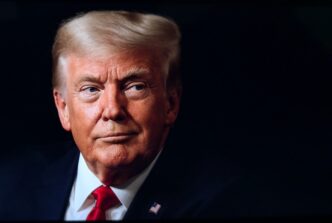Executive Summary
The Story So Far
Why This Matters
Who Thinks What?
President Donald Trump has significantly increased tariffs on imports from India, doubling them to 50% in a move aimed at penalizing the country for its continued import of Russian oil. This escalation follows an earlier 25% baseline tariff, placing levies on Indian goods among the highest the United States applies to any nation. The decision carries implications for US-India trade relations and could lead to higher consumer prices for American firms and consumers.
Trade Policy Escalation
The recent tariff increase, which now places India’s import duties among the highest imposed by the United States, builds on a 25% baseline tariff implemented just weeks prior. President Trump has previously stated that these measures are designed to punish India for its role in importing Russian oil, which he argues helps finance Russia’s ongoing conflict with Ukraine.
American businesses and consumers are already experiencing elevated costs due to previous tariff campaigns, alongside a reported deterioration in the labor market. The intensified levies on Indian goods are anticipated to exacerbate these economic pressures.
International Reactions and Context
New Delhi has previously indicated it would retaliate against President Trump’s tariff policies, particularly after initial warnings of “secondary sanctions.” India contends that the Trump administration is unfairly targeting its economy, noting that other significant importers of Russian oil, such as China, face lower tariff rates.
While China, the largest buyer of Russian oil, currently faces a minimum 30% tariff, Trump has cautioned that other nations purchasing Russian oil could soon encounter increased tariffs. The trade deficit between the United States and India has expanded over the last decade, even as both countries have roughly doubled their mutual imports.
Impact on Goods and Industries
Last year, the United States imported approximately $87 billion in goods from India, primarily pharmaceuticals, communications equipment like smartphones, and apparel. In contrast, American exports to India totaled about $42 billion, comprising mainly oils and gases, chemicals, and aerospace products.
It is notable that smartphones are exempt from these “reciprocal” tariffs. Furthermore, existing sectoral tariffs, such as the 50% duties on steel and aluminum, will not be stacked on top of the new 50% country-specific tariff, meaning affected Indian products will face a single 50% levy. The American industries exporting to India could be particularly vulnerable if India enacts retaliatory tariffs.
Conclusion
The imposition of a 50% tariff on Indian imports marks a significant escalation in trade tensions, driven by the Trump administration’s policy regarding Russian oil imports. This move is expected to impact American consumer prices and trade relations, while also raising the prospect of retaliatory measures from India.








